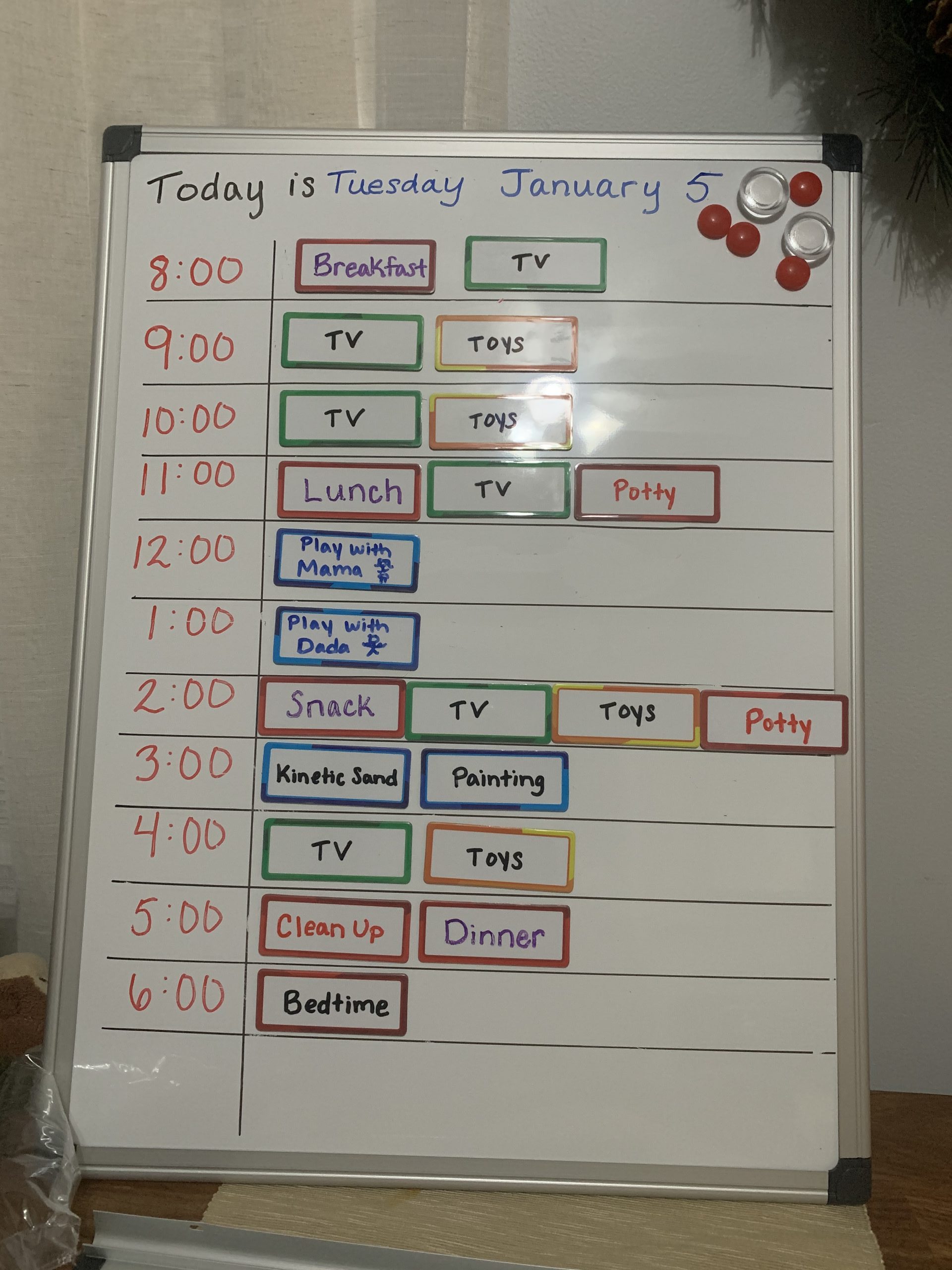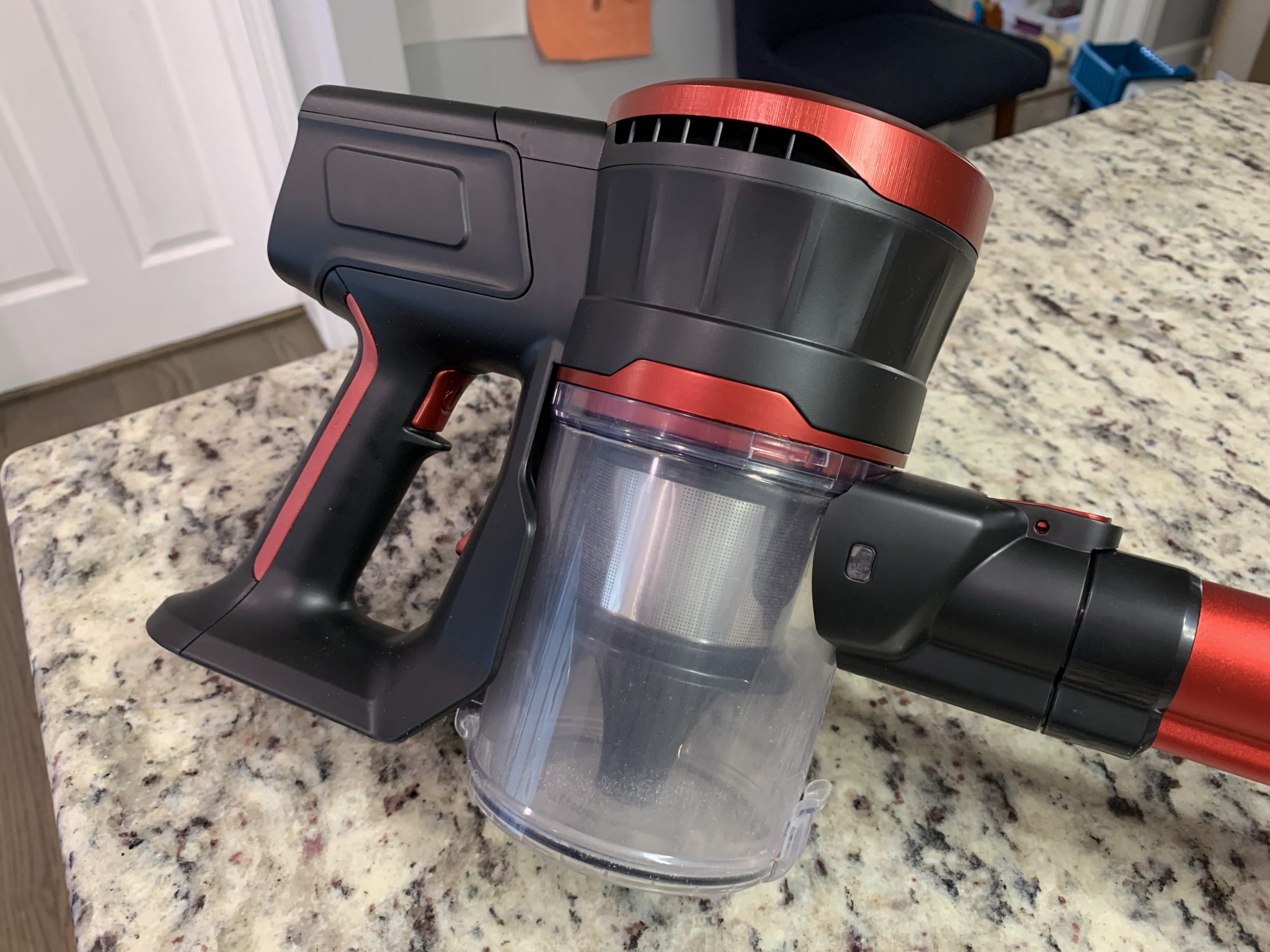In March 2020 my wife and I decided to pull our kids from daycare and we both stopped taking the train into downtown Chicago to work at our offices. It is hard to believe that the Coronavirus (COVID-19) pandemic really hit our home less than one year ago. Ten months ago we had no idea how we were going to work from home and manage two young children (then 3 and 1) and handle our very demanding corporate jobs. The mental stress of what we were going to do was building and so was the guilt of watching both our kids be accustomed to YouTube, apps, and lounging as we didn’t have set times for exercise or recess.
Throughout the remainder of 2020 we sort of “winged it” by trying our best to work and find small pockets of time with the kids so we could all get through the day together but not every day was the same. My wife and I would both go on streaks of having to focus on work and the guilt of not being able to be there for our kids set in.
By some grace of God, in 2021 we decided “let’s make a schedule”. I know this sounds like something we should have done in March of 2020, but we did not know how long this was going to go and we did not anticipate the amount of mental stress that would come from managing the kids and work for so long. Neither are we teachers or licensed childhood educators! However, we knew we had to try something and so far it has been working well.
For anyone else in this situation who has not tried this yet, here is what we did and how it has been working.
Buy a Board & Some Magnets
We knew that our kids’ daycare rooms had lots of calendars and charts to tell them what time of the day it was and what activities they were going to do. Some daily calendars have a set clock with moveable velcro hands or a list of fixed, daily activities that you can move a sliding arrow down to indicate the current “activity time” (playtime, nap time, potty time, etc…). But we knew that our days were never going to be that structured. These boards seem best for full-time educators who can plan and execute the specific activities that fall within those slots. For example, “playtime” may be playing outside one day or doing jumping jacks to music another. If these work(ed) for you, that’s great! But if it doesn’t keep reading.
Given our work days vary due the the amount of meetings we have, we opted to purchase a blank whiteboard and customize it ourselves. As with much of what we bought over the pandemic, we bought this one off Amazon since we weren’t doing much in-store shopping during quarantine. You can find it here: Amazon Basics Magnetic Framed Dry Erase White Board, 18 x 24 inches. The 18 x 24 size was just right. If this isn’t available I recommend going bigger, not smaller, as the magnets we used fit perfectly within this size but a bigger board will allow for more activities.

Format Your Scheduling (do what works for you)
Now that we had our whiteboard we needed to find the right format for our day. Since our work days are really managed by the hour we chose to draw out hourly sections on our board to coincide with when we could spend time with the kids. Then we used these nifty label magnets which we used to represent the blocks of activities we could do within the hour. The key here is we gave our kids up to three individual options to do during their hour block and allowed them to choose. The beauty of these magnets were we could write out a set of activities and be modular with our board. Again, we need flexibility so we could change our entire day both daily and on the spot. For example, if we had Kinetic Sand at 3 and an impromptu meeting with our teams came up, we could work with the kids and adjust on the fly.
The Magnets
We bought these 32 Pieces Strong Dry Erase Magnetic Labels 3.3″ x 1.3″ from Amazon as well and they came with a set of colored dry-erase markers too. The things I love about these are they are blank/customizable and come in a variety of colors if you needed to do activity color coding. They are also very strong magnets, which minimize the risk of a child knocking into the chart and ruining all your hard organization work. As I said above, magnets allow you to be flexible and modular in your scheduling, which is exactly what we needed.

The Method
Each night we meet for 5-10 minutes when the kids are asleep to discuss what meetings we have on the calendar and also what blocks of time we have free. Keep in mind our daily schedules are driven by what my wife and I decide to accept or block out of our work calendars. We chose to try to each dedicate one hour of the day to strict play time with the kids so we can get quality time with them and they can feel like they get it from us. We also discuss who can handle some of the fixed things like breakfast, lunch, snacks and naps. There are even days where we use blank magnets to draw up special opportunities that come up like going outside in the snow or making pizzas together.
Whatever the schedule looks like, we try to do it the night before or before the kids wake so we can take a few minutes each morning to review the schedule with them. It is important to keep it simple too so they can understand the day’s possibility (for example we won’t dictate which toys to play with or programs to watch).
Lastly, as much as we can we try to check in each hour to show them what we’ve done and mark it off with a check or a magnet. It helps them understand the progress they’ve made and what is up next. I think it even gives them a sense of accomplishment, which is always great at this age.
Has it been working?
We are only two weeks into this experiment but we can already tell that we love our little system. For Mom and Dad, a lot of the mental burden/guilt of “not paying attention to our kids” during the workday has dissipated. Now we dedicate a block of time to unplug, shut-off, and spend time with them, in addition to the natural parental interactions of the day.
I think it has been beneficial for the kids too. Our new schedule visually sets expectations for our little ones that there is play time and work time for each of us. During “Mama and Dada’s work time” they can choose activities that they can do on their own until it is time for Mama and Dada to step in. They can also be independent during certain play times and know when it is right for us to play together. This might seem like a lot of structure for a (now) 4 and 2 year old, but this is the reality we live in with the pandemic and how we have learned to coexist.
A note of encouragement
Now there is thing thing called “guilt” that many parents can relate to and many have to learn how to balance. For example, I could be embarrassed and fear being judged by the amount of time on this schedule dedicated to “Toys” and “TV”, but given the situation we are in we have come to accept that this is the best we can do — and that’s healthy. While we are always “parents”, in reality we are both full-time professionals and now full-time daycare providers. To think anyone can simultaneously do both at 100% is completely unrealistic. We are not teachers and this is reality for us until we can safely get our children back with their teachers (who we all very much miss). I really think it is important for any parent in this situation to know their limits and acknowledge them. Even without a pandemic, as parents, we are always striving to do the best that we can. So for anyone who is in this situation too, keep at it and don’t get discouraged. I hope this method helps you in this particular situation and, for other areas you are navigating this pandemic with your family, you stay both hopeful and creative.
You got this.


